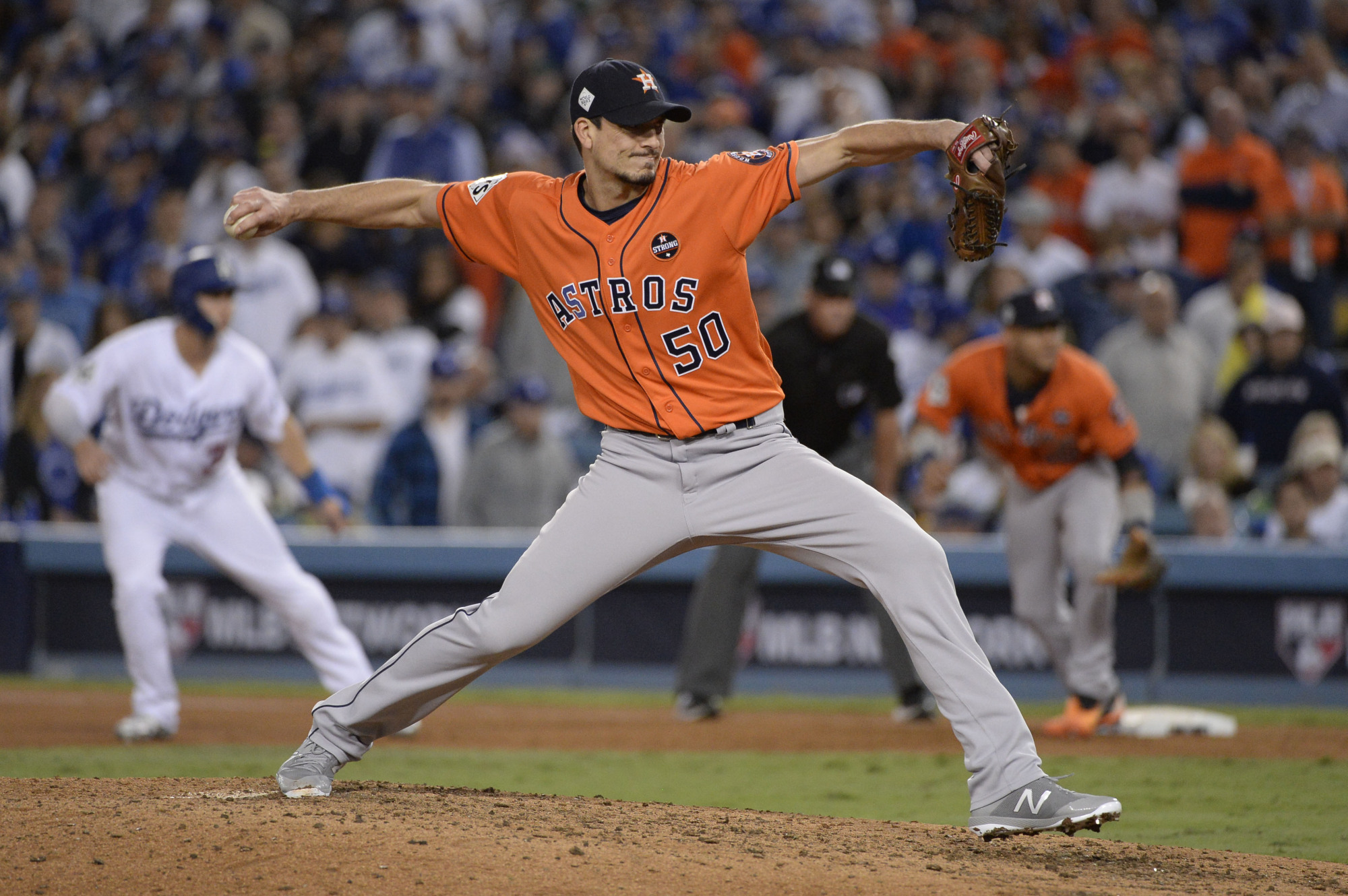Two hours before an exhibition game in March, the Houston Astros clubhouse was vacant save for MAS and 'Stros hurler Charlie Morton.
This, of course, was the pre-World Series hero Morton. Back then, he was merely big question mark Charlie (more on this in a bit).
The Astros' changing area at the New York Mets spring training site was empty because, unbeknownst to MAS, the Houston ballclub was in "show-and-go" mode that day.
Meaning, the Astros would take pre-game batting and fielding practice at their West Palm Beach digs, take the 30-minute bus ride to Port St. Lucie and arrive ready to play.
Morton, who was to make his spring training debut that day, lived close to the ballpark and was given permission to drive his car to the game.
MAS and Morton — a very personable sort — would make acquaintances and then, to kill time, proceed to the Houston dugout and engage in a conversation that lasted a good half-hour.
Charlie shared that he was apprehensive.
Career-wise, he was at a crossroads. His baseball future was filled with uncertainty.
Morton was coming off a severe hamstring injury that caused him to miss most of the previous season with Philadelphia.
It was just the latest in a laundry list of ailments.
"I've had four surgeries in the last five years," Charlie told MAS. "My left hip, Tommy John surgery on my elbow, then my right hip and now this one on my hamstring."
As they say in Texas, this could be the last round-up for ol' Charlie.
He had just inked a surprising — for a pitcher with a career 46-71 record and 4.54 ERA — $14 million, two-year deal with Houston.
Houston raised quite a few eyebrows, even Charlie's, with their generosity.
"That winter, I was a 33-year old pitcher coming off surgery, wondering who would want me," Morton recalled. "I thought maybe I was looking at a minor league free agent deal with somebody."
Morton was now anxious to validate his hefty price tag but really didn't know quite what to expect of himself.
Did he still have it? Would the injury bug bite again?
Truth be told, even MAS was skeptical.
He thought to himself: This guy missed almost a WHOLE season because of a torn hamstring?
Those things usually heal in a month or so. (MAS had popped a hammy or two himself.)
"Mine was torn completely off my pelvic bone, near the bottom of my buttocks," Charlie explained to MAS.
"They had to drill holes in my pelvis and reconnect the hamstring with surgical wire — like fishing line — that they threaded through the holes."
Oh.
Doubting MAS' bad.
By now, Charlie had gotten used to long rehabs. He knew the drill.
"I was in a cast and leg brace for eight weeks," recalled Morton. "It was frustrating but anytime you have to be patient and persevere, you learn how to do it.
"And the more you do it, the better you become at it."
Come game time, MAS would disdain his press box perch and, instead, slip down into a third- row box seat to get a better look at what Morton had.
In just his first inning of work, Charlie was already hitting 156 kph on the radar gun with his fastball and snapping off hellacious breaking balls.
It would be a precursor of things to come.
Morton would go 14-7 (ninth-best winning percentage in the National League) with a 3.62 ERA in the regular season. And, surprisingly, he was one of the few Astros starting pitchers who would remain healthy throughout.
Then in the postseason, Charlie became the first hurler in MLB history to win the seventh game of both a League Championship Series and the World Series.
Morton hurled four shutout innings in relief to lock down Houston's series clincher over the Los Angeles Dodgers.
That, of course, meant Charlie would have the great honor of being at the bottom of the Astros' celebratory dog pile after the final out.
Who'da thunk it? Besides Houston management, that is.
"Our scouts looked at what his weapons were, how good he could be," explained Astros manager AJ Hinch.
"They felt he just hadn't stayed healthy."
Early in that 2016 season, when Morton was with Philadelphia — just before his hamstring injury — Houston scouts noticed Charlie had added 5 to 6 kph on his fastball by changing to a four-seam grip.
They also saw that Morton had become a better sinker-slider pitcher by delivering the ball from a lower arm slot, thanks to an offseason meeting Charlie had with a West Point skill instructor.
"What we thought he can be, played out exactly how our front office told me," said Hinch.
So, what was Morton thinking when he was summoned to protect a 5-0 lead with a potential first-ever World Series title for Houston hanging in the balance?
"I tried to tell myself 'it's just the last game of the season,' " said Charlie. "Don't know if that helped. I was a little high with my pitches at first but then I settled in. "
"It was fun. This is the epitome of what you can do in this game. I'm grateful."
Later, Morton became reflective.
"All that has happened to me has made me a better person, a better ballplayer," Charlie stated.
"I appreciate that as much as winning the World Series."
Predictably, Morton was besieged by a ton of media types at the end of his historic, rise-from-the-ashes journey.
But, as things turned out, MAS got quite the exclusive that day in March, when Charlie took his first step.
Contact Man About Sports at: [email protected]




















With your current subscription plan you can comment on stories. However, before writing your first comment, please create a display name in the Profile section of your subscriber account page.